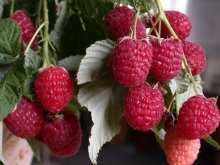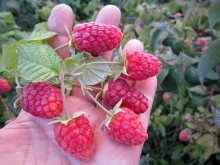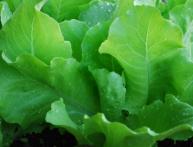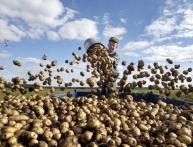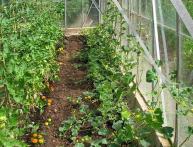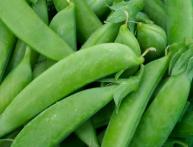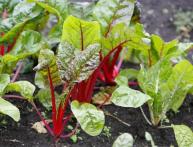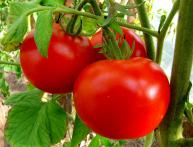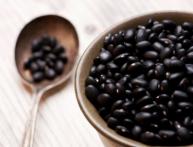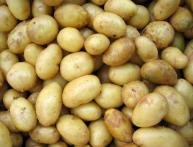Planting and caring for remontant raspberries
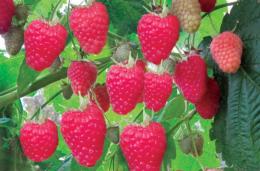
Remontant raspberries are an excellent alternative to regular berry bushes. The main advantage of such a plant is that it bears fruit twice a year, and the berries are large and tasty. Raspberries of remontant varieties are now at the peak of popularity among experienced gardeners and ordinary amateurs.
The reason for this excitement is absolutely clear - such varieties can bear fruit twice a year and produce significantly more fruit than an ordinary bush. And also, with an annual cycle of growing raspberries, you don’t have to deal with a large number of ailments and pests, the period of activity of which falls on the stages of development of ordinary fruits. But, there are certain features of caring for remontant raspberries that you should know about before planting the plant. Let's look at them in more detail in the article.
Content:
- What are remontant raspberries?
- Preparing the soil and planting raspberries
- Features of caring for remontant raspberries
What are remontant raspberries?
Remontant raspberry is a plant that bears fruit twice in a year. Summer residents harvest the first harvest in early summer, and the second in autumn. Often the second harvest is larger and the berries are larger than the first time, which is especially pleasing to those who like to eat fresh raspberries in early autumn. The following are considered the main positive aspects of growing remontant raspberry varieties.
The plant begins to bear fruit in the first year after planting.This means that if you plant several bushes of this berry in early spring, you will reap your first tasty harvest in the fall. The shrub is not susceptible to diseases and insect pests.
The life cycle of insects is set to the normal period of berry ripening. Remontant varieties ripen earlier and later than this period.
The plant overwinters quite independently: it does not need to be covered with film, leaves or shoveled snow. Raspberries begin to bloom as soon as the last frost has passed, so all the flowers that the bush throws out turn into fruits. Unlike ordinary raspberries, which tend to send out shoots everywhere around them, remontant raspberries behaves much calmer.
This way, you don't have to devote a lot of attention and effort to fighting unwanted escapes. Thus, remontant varieties have a large number of positive aspects that will greatly appeal to both experienced summer residents and novice gardeners.
Preparing the soil and planting raspberries
A place in the corner of the garden or vegetable garden that is well lit by the sun and protected from cold winds and drafts is ideal for planting raspberries. Next, to prepare the soil for planting, apply fertilizer to the soil. This can be a uniform distribution over the entire surface of the designated area, and digging it up, or pouring it into holes and trenches.
For ordinary soil, it is enough to add several buckets of humus or high peat, and 1 glass of superphosphates and potassium sulfate. Then we go directly to landing raspberries It can be planted in early spring or autumn. The best option is the end of September.
This way, the plant will have time to take root and overwinter successfully.And next spring you can eat fresh and sweet berries. Another important condition for planting a plant is that the root collar of the raspberry be at the same level as it was before transplanting. When filling the rhizomes with soil and compacting it, you need to be especially careful, because the root system is very easy to damage.
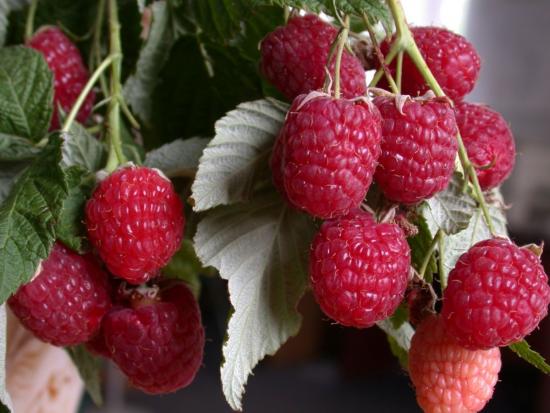
Regardless of weather conditions and the level of soil moisture, raspberries need to be watered daily, using at least 5 liters of water per seedling. If you plant remontant raspberries in a row, then you need to maintain a distance between seedlings of about 1 meter, and the distance between the rows should be at least 1.5-2 meters. Such conditions will be optimal for the normal development and growth of raspberries.
Features of caring for remontant raspberries
Proper plant care includes a number of procedures that will help you harvest an excellent harvest of large and tasty berries. Trimming. Remontant raspberries tend to bear fruit on shoots that are 1 or 2 years old. But the first harvest requires a lot of energy and nutrients from the plant, so often the first, early harvest is smaller and the size of the berries is smaller.
Therefore, it is recommended to focus more on the late autumn berry harvest. To do this, it is recommended to prune plants correctly and on time. In the fall, after harvesting the second harvest, you need to cut off two-year-old shoots that have already finished bearing fruit.
Of young shoots, only the tops, where the first berries were, are cut off. And in early spring you only need to trim off shoots that were injured or frostbitten during wintering. It is very important to loosen soil during plant growth. It is recommended to do this starting in early spring, when raspberry buds are just beginning to appear.
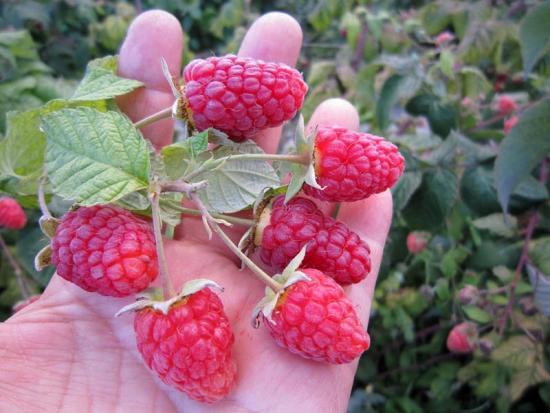
Between the rows, loosening is carried out to a depth of 10-15 cm, but in the bushes themselves you should not go deeper than 7-8 cm, otherwise you risk damaging the root system of the plant. Loosening is necessary so that oxygen can more easily enter the soil, moisture is better retained, and beneficial microflora develops well.
Watering the plant. It is very important to water raspberries regularly so that they can fully develop and produce a good harvest. Watering should be done until the soil is wet by 30-40 cm. It is difficult to determine the regularity of watering, it all depends on the weather outside.
It is especially important to moisten the soil during plant flowering and fruit ripening. You also need to water the bushes after each harvest of berries. This way the next harvest will turn out juicier and tastier, and the raspberries themselves will not look dry and exhausted. Also, with the help of constant hydration, minerals and vitamins from the soil are better absorbed.
Remontantnaya raspberries - An excellent alternative to regular raspberry bushes. It has a large number of positive aspects, the main one of which, of course, is fruiting twice a year.
And the methods of care are not very different from the methods of caring for ordinary plants, and will not be a burden to those who like to work in the garden. For your efforts, the bush will thank you with a harvest, which you will begin to receive in early summer, and until the fall you will be able to pamper yourself and your family with delicious homemade berries.
Remontant raspberry on video:

